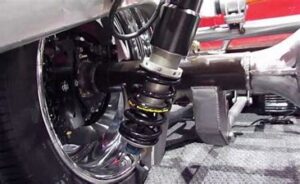Tesla’s ground-breaking regenerative braking system has revolutionized the electric vehicle industry and changed our perceptions of energy economy and braking. But just picture your shock when your reliable Tesla appears to use the brakes under regenerative braking. Yes, there is a perplexing situation that some Tesla owners may run into: the “Tesla Regenerative Braking Not Working” moment. Regenerative braking, which recycles energy during slowdowns and transforms it back into power for your vehicle, is the equivalent of the electric car’s superhero. However, what occurs if this environmentally friendly function goes on a coffee break?
We’ll set out to solve the puzzle of why your Tesla’s regenerative braking may choose to momentarily clock out in this post. We’ll walk you through the ins and outs of keeping your electric vehicle running smoothly on the green path, from the fundamentals of regenerative braking to investigating the common reasons causing these issues and, eventually, providing workable answers. So fasten your seatbelts as we travel down the path to comprehending and resolving this Tesla Regenerative Braking problem.
Table of Contents
Understanding The Tesla Regenerative Braking In Detail
When you apply the brakes, picture your Tesla not just slowing down but also miraculously converting that slowness into additional energy for your vehicle. That is how Tesla’s regenerative braking works! Let’s dissect it. Your car gains speed when you drive, right? Now, most cars utilize conventional brakes when they need to slow down or stop, which wastes energy by converting all that moving energy into heat. However, things operate differently in a Tesla. When you take off the accelerator or apply the brakes, the wheels of a vehicle become miniature generators thanks to regenerative braking, which works like hidden power.
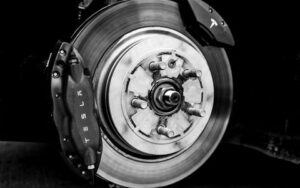
It captures some of the kinetic energy and transforms it back into electricity, saving energy instead of wasting it. The battery in your automobile receives an additional charge from this recycled energy. It functions as an endless supply of energy, increasing the efficiency of your motor and even allowing you to travel farther between charges. To put it simply, Tesla’s regenerative braking is like having a smart friend that helps you go above and beyond while also making your car more environmentally friendly.
Why Is My Tesla Regenerative Braking Not Working?
Owners of electric vehicles may find it perplexing when their vehicles experience problems with Tesla’s regenerative braking technology. Here is a straightforward explanation of the common causes.
1. Low State Of Charge (SOC) For Batteries:
Consider the battery in your Tesla to be a sponge. It can’t hold on to more water once it’s nearly full. Similar to this, when your battery is almost fully charged, regenerative braking may stop to prevent overcharging and preserve the integrity of the battery.

2. Difficulties In Cold Weather:
Your car may behave a little slow in cold weather, much like you do in subfreezing temps. In really cold weather, your Tesla may put more emphasis on warming its battery than on regenerative braking. It is comparable to your car putting on a warm jacket before driving.
3. Broken Brake Systems:
Similar to how you would exercise caution if your shoes started to feel strange, your Tesla would react similarly if there is a problem with its braking system. To ensure everyone’s safety, regenerative braking may be momentarily turned off if a problem is identified.
4. Software Bugs:
The software in your Tesla is its brain. It is subject to glitches and bad days, just like a computer. In the event of a software glitch, regenerative braking may not function as smoothly. The good news is that Tesla offers software updates to maintain functionality and correct faults, just like how you would update your phone.
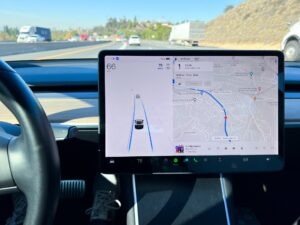
5. Wear & Tear By Mechanism:
The regenerative braking mechanism on your Tesla can be compared to a bicycle with gears. The smoothness with which the pedals turn may be affected by the gears wearing down over time. Similarly, the system may need to take a break if sensors or brake pads associated with regenerative braking wear out.
Therefore, it’s similar to having a road map for troubleshooting regenerative braking problems when you know these typical reasons. Regenerative braking may frequently be restored to operation by checking the charge of your battery, exercising caution in cold weather, making sure your brake system is in excellent condition, staying up to current on software updates, and providing your Tesla with routine maintenance. Even if it can seem like a little stopover, resolving these issues guarantees a more comfortable journey while using electric cars.
Solutions To Tesla Regenerative Braking Issues: Getting Back On Track
Take comfort in knowing that there are solutions available if you’ve ever questioned why your Tesla Regenerative Braking not working. Here’s a quick guide to reintroducing the environmentally friendly joy of regenerative braking to your electric journey, from optimizing battery charge to weatherproofing your vehicle and maintaining it.
1. Verify The Level Of Your Battery:
When your battery is nearly full, regenerative braking may take a vacation. Saying “Hey, the battery is packed, no more energy can fit!” is how it feels. To resolve this, just drive until the battery isn’t completely charged. At that point, your regenerative braking should resume.
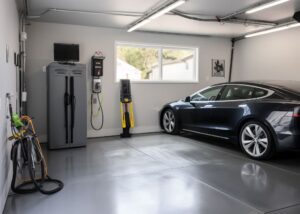
2. Conquer The Chill:
Your Tesla may be more interested in warming up its battery than doing regenerative magic if you’re in a chilly climate. Before you drive, precondition the battery using the Tesla app. Regenerative braking should resume as soon as your automobile reaches a comfortable temperature. Imagine it as providing your car with a warm blanket during the winter.
3. Check Your Brakes One More:
Sometimes the problem is with the standard brakes rather than regenerative braking. To be safe, the vehicle may disable regenerative braking if there is a problem with the brakes. See a Tesla specialist to ensure your brakes are in excellent shape.
4. Maintain The Software’s Happiness:
Although Tesla is an intelligent device, there are moments when its software, or brain, can use a little boost. Verify that the software in your automobile is current. Regular updates from Tesla are similar to receiving updates on your phone, just for your car. It’s likely that one of the adjustments included in these updates which frequently contain fixes—includes your regenerative braking solution.
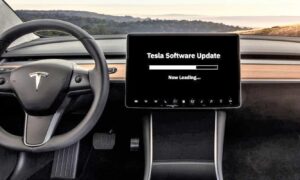
5. Take Care Of Yourself With Love:
Cars require a little love and care, just like people do. Observe the Tesla maintenance plan. Make sure to address anything that needs repair before it gets worse. Frequent maintenance will keep your Tesla operating at peak performance and ensure that regenerative braking continues to function.
Therefore, hiccups in regenerative braking don’t have to be painful. Maintain regular maintenance, check your brakes, update your software, warm up in the winter, and check your batteries. You will be driving down the green road with ease and your Tesla will be grateful. Enjoy your drive!
Conclusion:
Even though the “Tesla Regenerative Braking Not Working” scenario could raise some short-term concerns, most problems can be fixed by comprehending the possible causes and putting the recommended fixes into practice. Future generations of Tesla are expected to have more reliable regenerative braking due to software updates and technology breakthroughs, as part of the company’s commitment to ongoing improvement. The odd bump on the road for electric vehicles can be seen as a necessary learning experience as they progress toward a more electrified and sustainable form of transportation.
![You are currently viewing Why Is My Tesla Regenerative Braking Not Working? [Explained]](https://hydraulicsuspension.com/wp-content/uploads/2023/12/tesla-regenerative-braking-not-working.jpg)

